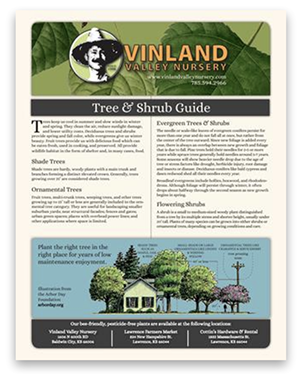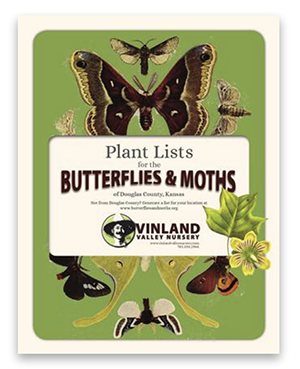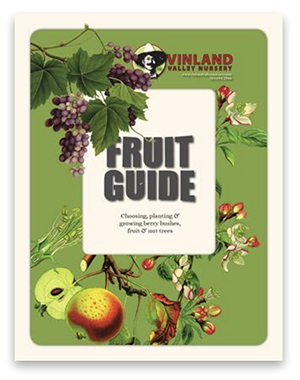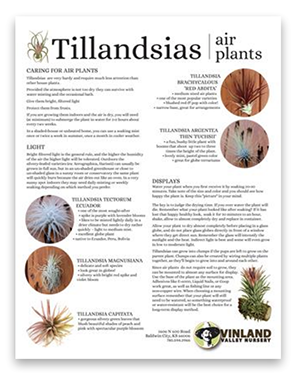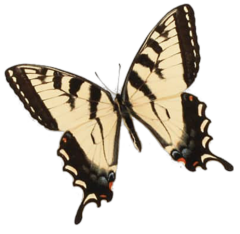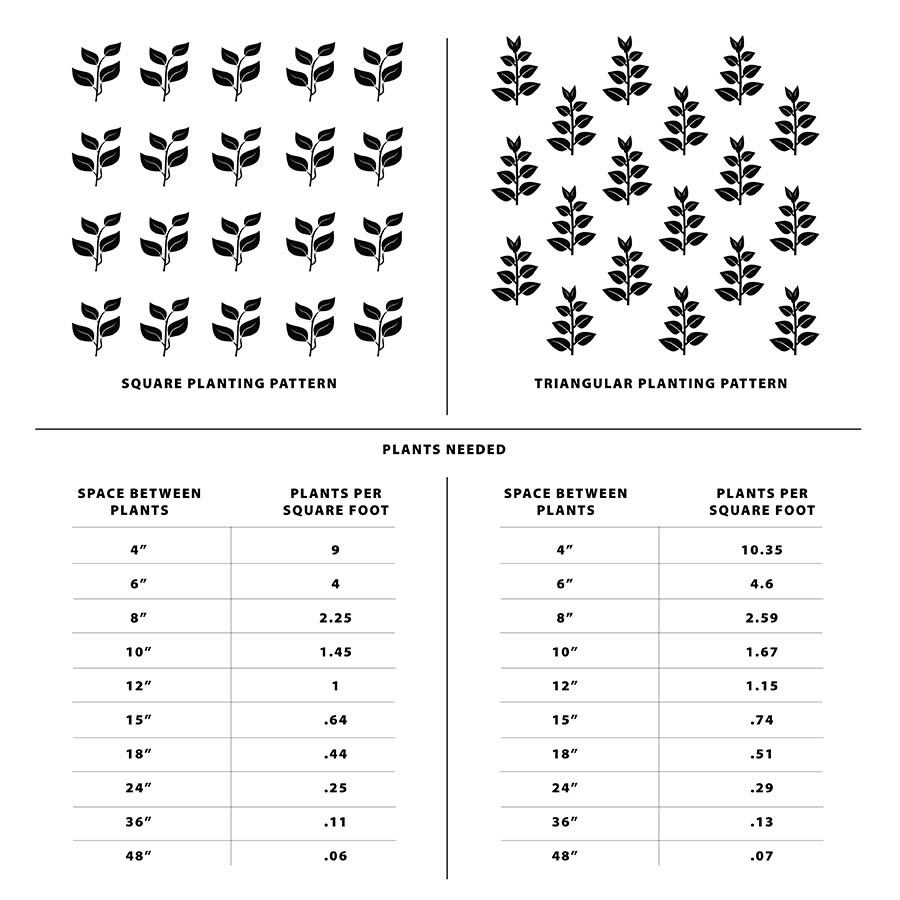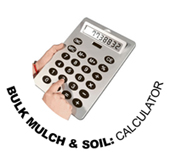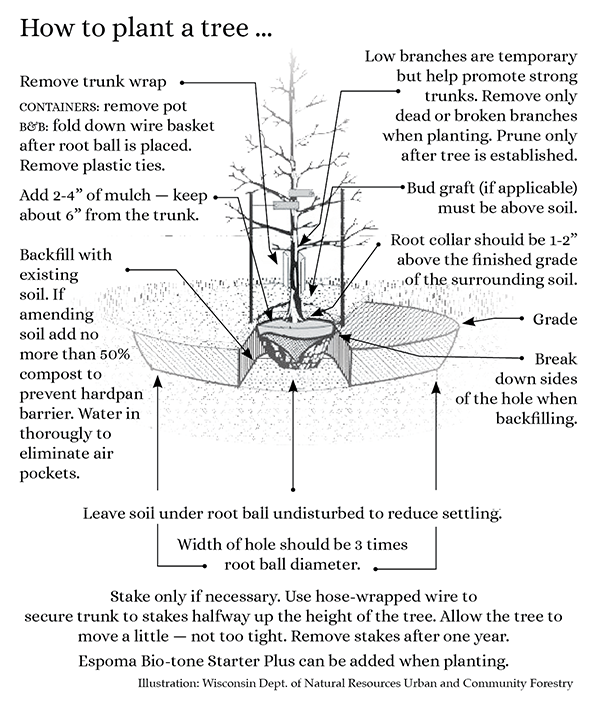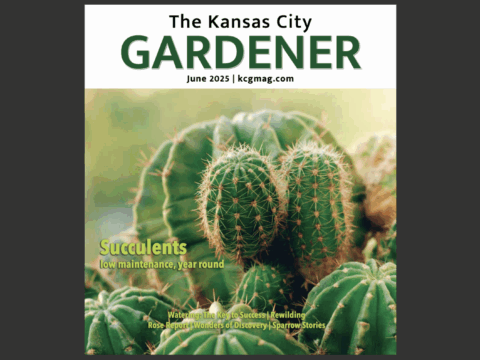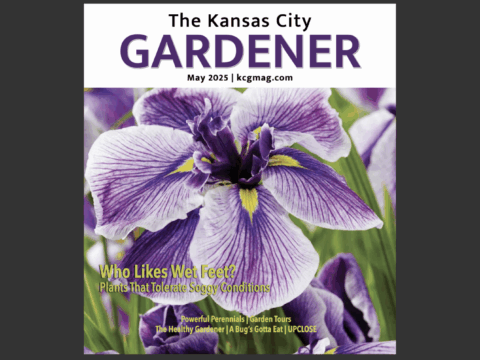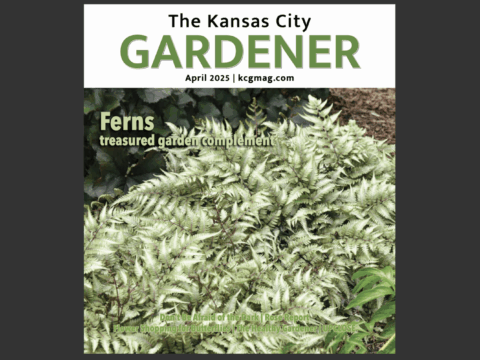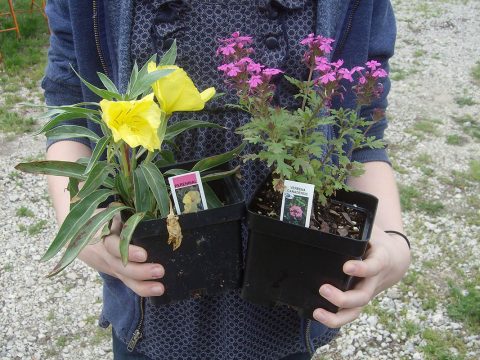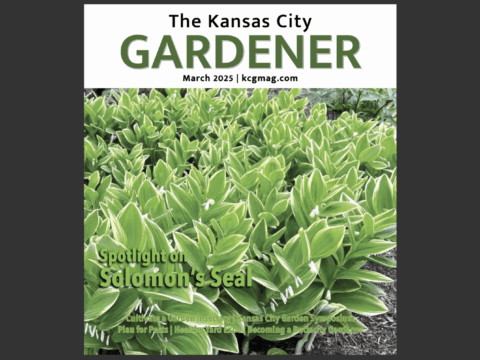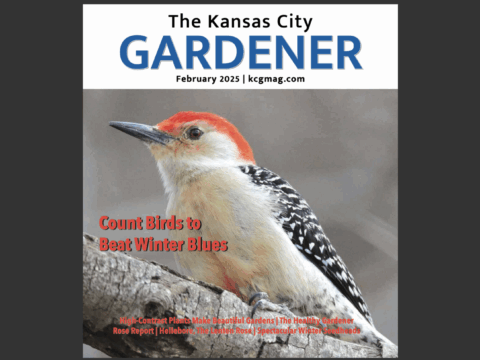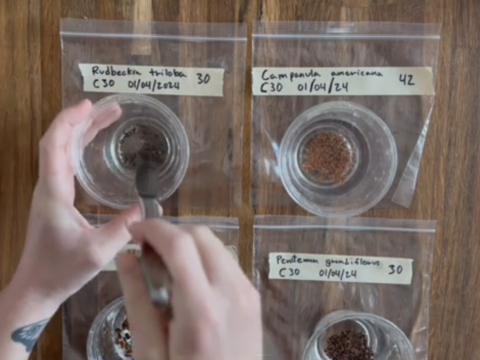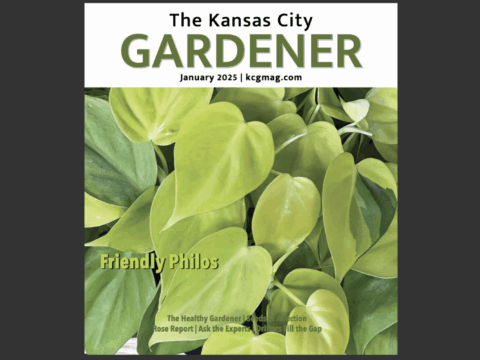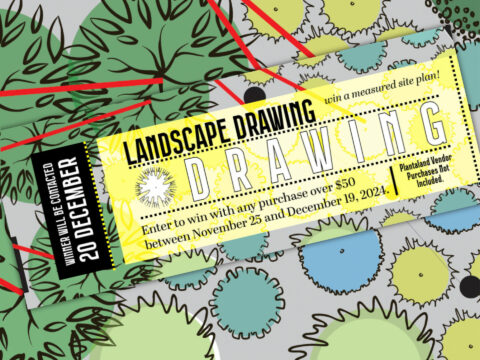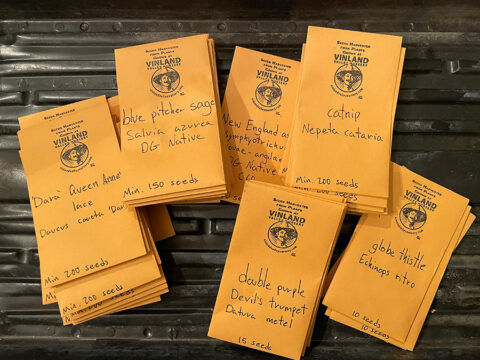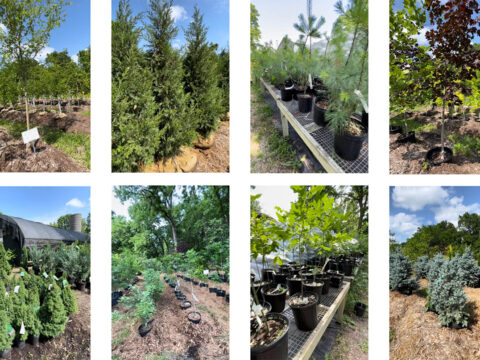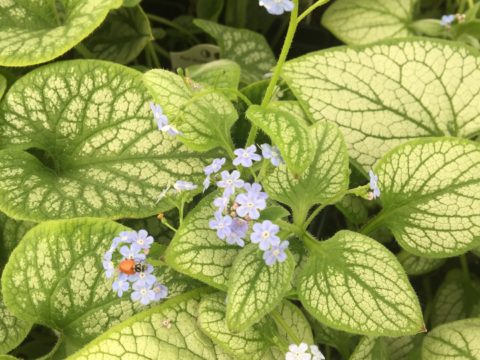Price Lists, Resources & FAQ
Visit our Butterfly Gardening page to find
host plant lists for butterfly and moth species!
WEBSITE NAVIGATION & QUICK LINKS
How To Use the Plant Filter Menu
WEATHER
National Oceanic and Atmospheric Administration
Current Soil Temperature in Kansas and Missouri
COLD HARDINESS
The USDA Plant Hardiness Zone Map is the standard by which gardeners and growers can determine which perennials, shrubs and trees are most likely to thrive at a location. The map is based on the average annual minimum winter temperature, divided into 10-degree F zones. In the 2023 map, Lawrence remains in 6b with the surrounding areas updated to Zone 6b. Wichita has joined northern Oklahoma in 7a. Plants listed for Zone 6 down to Zone 2 are suited to planting outdoors in our area. Plants listed for Zone 7 and higher require higher temperatures and should be moved indoors before first frost.
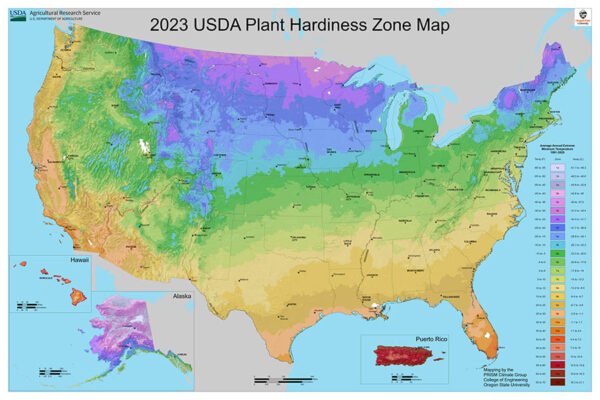
You can find your exact hardiness zone, dates of first and last frost, humidity and drought maps,
and more by clicking the link below and typing in your zip code.
SUNLIGHT
Planting the right plant for your garden’s sunlight conditions is essential for success. Shade plants will burn up in sun, and sun-loving plants will simply starve to death and wither in shade. Before selecting plants observe the area to see when sunlight falls on the garden. Click the links below for plants suited to each lighting condition.
- sun 8 hours or more direct sunlight
- part to full sun 6 hours or more direct sunlight
- part sun/afternoon shade (eastern exposure) 6 hours or less direct sunlight, morning sun only
- part to full shade 4 hours or less sunlight
- full shade (northern exposure)
- sun and shade tolerant some plants can do it all!
TYPES OF PLANTS
Search for the plants that fit your needs.
Annuals complete their life cycle within one growing season — from spring to fall. Because they have a short life they typically flower for their entire lifespan to produce as much seed as possible to produce the next generation. Some annuals are self-seeding and may reappear year after year.
Perennials grow for more than one year but flower for a shorter duration. Some perennials are short-lived but spread by seed or underground by root so that you may not even notice the death of the original plant. Some plants that are perennials in their native lands (for example, in the tropics) are treated as if they were annuals in our area. A biennial is a flowering plant that requires two growing seasons to complete its life cycle. In the first year, the plant produces roots and foliage. The following year it flowers before dispersing seed and dying.
Shrubs are small- to medium-sized woody perennial plants distinguished from trees by their multiple stems and shorter height — usually under 13-16 ft. Plants of some species may grow either into shrubs or trees, depending on their growing conditions. Small, low shrubs are sometimes called subshrubs. Our hardiness zone is 6a or lower for winter survival.
Trees are woody perennial plants with an elongated stem or trunk that supports branches. Again, stick with trees with a hardiness zone rating of 6 to 2 and you’ll be in great shape.
Coniferous trees and shrubs produce seeds without fruits or nuts. Most conifers bear seeds in cones, have needles instead of broad leaves, and keep their needles in winter.
Deciduous plants drop their leaves each autumn. The bald cypress and dawn redwood are two examples of deciduous conifers!
Evergreens can be coniferous (pines and spruce) or broadleaf (holly and boxwood). We carry evergreen trees and shrubs.
Native plants have evolved alongside native wildlife and offer the most useful habitat — food & shelter — in addition to great beauty. Our native trees, shrubs, perennials and annuals are adapted to grow in local conditions so they do well without requiring extensive resources and chemicals.
Tropicals are plants from hardiness zones 7 and higher and love to grow on patios and porches in containers during warm weather, but must be moved indoors when temperatures begin to drop outside of their home range.
Succulents have thick, fleshy foliage that retains water in arid climates and soil conditions. Many succulents are cold-hardy in our area, while succulents from tropical regions are happy to grow as houseplants.
SOIL TESTING
Getting a soil test can take some of the guesswork out of gardening by determining the fertility and health of your soil. By measuring pH level and pinpointing nutrient deficiencies, a soil test can provide the information necessary for maintaining the most optimal fertility each year. Most plants perform best in slightly acidic soil (6.0 to 6.5) while others require a somewhat higher acidity in order to thrive. Having a soil test can make it easier to determine the current acidity so you can make the appropriate adjustments to correct deficiencies and select plants that are more naturally suited to your soil type.
The K-State Research & Extension offers this service. Click here for instructions on collecting and submitting samples along with price list and options for different testing packages.
A SIMPLE DIY SOIL PERCOLATION TEST
Proper watering is one of the most crucial elements to successful gardening, and a simple soil drainage test can help you understand how to give your trees, shrubs, veggie plots and garden beds the hydration they need for good health. Click here…
HOW MANY PLANTS DO I NEED?
When figuring out how many plants you will need to fill a landscape bed, first figure the square footage of the area. Next check the mature spread of the plants you will be using and find an average. Use that number to find the multiplier on the table below. Choose spacing based on how fast you want to cover the area and/or the mature width of the plant selected.
EXAMPLE: A 5′ x 10′ garden bed is 50 square feet. If I am planting perennials with a spread of 18″ and I want to plant in a triangular layout I need to multiply .51 x 50, which gives me 25.5 plants which I can round up or down. A square planting pattern would be .44 x 50 with a total of 22 plants needed.
HOW MUCH MULCH, COMPOST, AND TOPSOIL DO I NEED?
One scoop is approximately equivalent to one-half of one cubic yard. Use the calculator to estimate the amount you need for your area.
Click for details about our bulk products, pick up and delivery options.
WATERING: THE KEY TO SUCCESS
The number one reason for plant failure is inadequate watering. Knowing when and how to water correctly can ensure a healthy growing season with lush plants that will thrive and become more drought tolerant over time.
Landscape plants require deep watering to encourage deeper, stronger root growth.
- Perennial garden beds will establish best with about 2 inches of water one to three times per week depending on conditions*. Use an oscillating sprinkler or soaker hose.
- Shrubs and container-sized trees will do best when water is allowed to slowly soak in around roots for 15-20 minutes one to three times per week depending on conditions*. For a single plant place the end of a hose at the stem or trunk and run water at a slow trickle. For groups of shrubs arrange soaker hose around the base of each plant to leave in place for the season. This will make connecting and running water convenient.
- Large balled & burlaped trees will require water running at a slow trickle from the end of a hose for 20-30 minutes one to three times per week depending on conditions*. Where water must be hauled, use tree bags or pickle buckets with small holes that can be hand-filled and left to slowly drain above roots. Since the amount of water is limited by the container size more frequent filling will be necessary to properly direct roots down deep.
* During periods of extreme heat and drought, more frequent watering is necessary.
Watering more often on the soil surface will lead to weaker root growth and underwatering. Overhead sprinklers are best used for lawns since water can be lost to evaporation, and some plants such as roses are prone to diseases that thrive on wet foliage. Soaker hoses and drip irrigation are always better, going straight to the roots while keeping foliage dry.
Hand watering is best left for small garden areas and container plants which normally require daily watering in summer. Winter containers displaying hardy plants require weekly to biweekly watering when there is no precipitation.
PLEASE NOTE: with few exceptions drought tolerant plants are able to hold up during dry periods because their roots go very deep into the ground where soil moisture can be found even when rain has not fallen for weeks. This is why it takes weeks, months, and, in the case of large trees, even years to be self-sustaining. During periods of extreme drought, even long-established trees and landscapes will need supplemental water.
Drought can occur during cold winter months when evergreen plant foliage is especially vulnerable. Be sure to water on days when winter temperatures rise above freezing to give winter plants extra support when snow is in short supply.
The second most common cause of plant failure is too much water from improper drainage or planting too deeply! Plant material should always be placed with the soil surface inside the container to settle in at ground level. Where settling may occur or where clay soil causes water to drain more slowly, plant the root ball slightly above grade to keep the stems or trunk clear of soil and excess moisture.
When planting large shrubs and trees in unfamiliar ground it’s a good idea to dig a hole the size of the root ball and fill it with water to test drainage. If the water drains in fewer than three hours the drainage is excellent, and plants suited for dry locations will perform well. If the water takes from three to 12 hours to drain, then the drainage is adequate for most landscape plants (about 1 inch per hour). If it takes more than 12 hours, then the drainage is poor and plants suited to wet conditions should be used.
Ask us for recommendations for your conditions, or use our website search filters to find the perfect plants.
CLICK HERE for Ten Rules for Planting Trees This Spring from K-State Research and Extension.
VEGETABLE GARDEN CALENDAR & PLANTING GUIDE
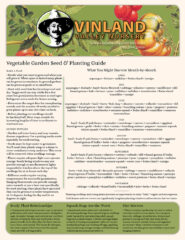
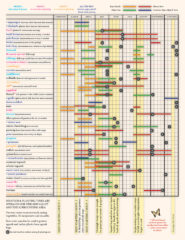 Get planning with our kitchen garden growing guide. We’ve combined planting calendars from many sources with our own experience and greenhouse seed sowing schedules, along with some average times to harvest, and created a guide we hope will help demystify vegetable gardening.
Get planning with our kitchen garden growing guide. We’ve combined planting calendars from many sources with our own experience and greenhouse seed sowing schedules, along with some average times to harvest, and created a guide we hope will help demystify vegetable gardening.
There’s a wealth of information available on the internet!
